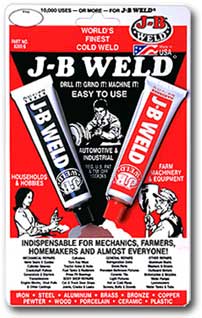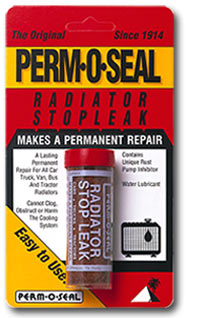read
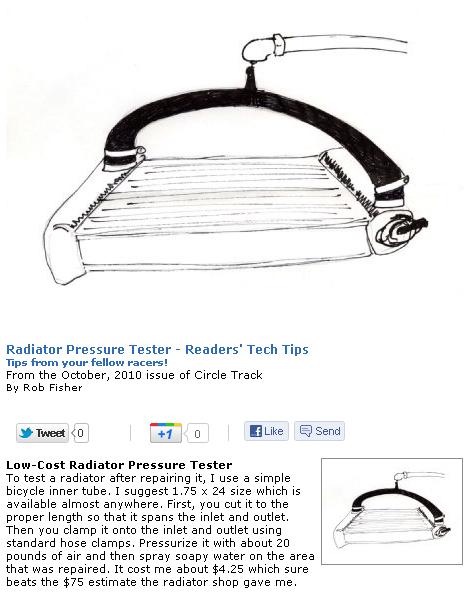
http://www.aa1car.com/library/coolant_leaks.htm
http://www.ifitjams.com/radiator.htm

http://www.lbfun.com/warehouse/tech_inf ... 0Paper.pdf
theres several versions, of these kits to fit and function on different types of radiators
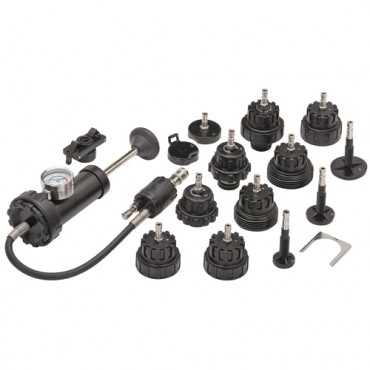
http://www.harborfreight.com/radiator-p ... 1b2166c62d
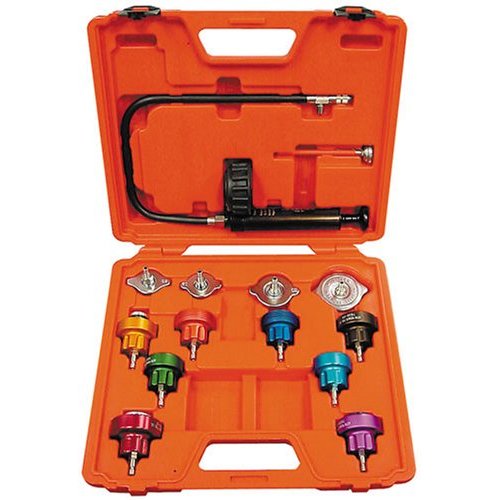
http://www.amazon.com/dp/B00061SGHW/ref ... B00061SGHW
http://www.sears.com/shc/s/p_10153_1260 ... 921x00003c
http://store.summitracing.com/partdetai ... toview=sku
Summit SUM-900078 $34.95

basically its a radiator cap test assembly that lets you pressurize the coolant system without needing to run or heat the system, making it far easier to locate leaks, 20 psi will usually be all that's needed to get coolant to seep or spray from any leaks, if your engines dripping coolant from the front chances are good its a worn water pump, or leaking freeze plugs, if the cars more than 4-5 years old.
viewtopic.php?f=62&t=846&p=1621&hilit=freeze#p1621
viewtopic.php?f=57&t=755
http://www.corvettefever.com/techarticl ... index.html
http://wiki.answers.com/Q/What_are_the_ ... ead_gasket
C4 related info
http://shbox.com/1/4th_gen_tech2.html#radflush
viewtopic.php?f=57&t=832
heres a different tool you'll need on occasion
"A combustion test kit can be found at your local NAPA, auto parts store. The part number is 700-1006. The price for this part is less than $50.00. Exhaust gases in your cooling system can suggest a head gasket leak, a cracked block, or a warped head, etc. A leaking head gasket can create excessive heat and pressures exceeding the ability of the radiator’s cooling capacity, and should be repaired immediately to avoid additional costly repairs
http://www.arrowheadradiator.com/head_g ... k_test.htm
To do the test, add the blue detector fluid to the (block-tester) plastic container according to the directions, and place it onto the radiator filler neck. The squeeze bulb is placed on top of the reservoir and squeezed repeatedly (Some block testers, have a tube that connects to a vacuum line instead of a squeeze bulb). Squeezing the bulb will draw air from the radiator through the test fluid. Block tester fluid is normally blue. Exhaust gases in the cooling system will change the color of the fluid to yellow, indicating a combustion leak. If the fluid remains blue, exhaust gases were not present during the test. The vehicle should be started and at operating temperature before performing the test. Vehicles with head gasket leaks may overheat, and purge hot water and steam out of the radiator. Perform this test, at your own risk, and do not do the test, unless you are experienced and are wearing clothing and equipment to protect you from burns, or injury. For an overheating specialist in your area that is familiar with this procedure go to http://www.narsa.com.
Sometimes, engines with a head gasket leak show steam, water or white smoke exiting the exhaust pipe. Other symptoms include coolant in the oil, or oil in the radiator coolant. "
http://www.arrowheadradiator.com/Radiat ... 20Tips.htm
http://www.ehow.com/how_2188877_check-c ... leaks.html
http://www.shopperschoice.com/item_name ... 74867.html
http://www.diynetwork.com/diy/en_mainte ... 87,00.html
http://www.shopperschoice.com/item_name ... ce=froogle
YOU'LL NEED A BLACK LIGHT to use the dye!
http://www.scoe10x.com/scripts/prodView ... FQodW3D9CQ
http://www.cheapnovelty.com/handheld-blacklight.html
keep in mind milky looking oil in the engine and a compression test showing a low cylinder(S), and smoke from the tail pipes usually indicates a bad head gasket or cracked head or block, oily milky crap in the coolant but clean oil and the engine running ok, tends to indicate a cracked radiator and that also frequently results in milky trans fluid which will quickly kill the transmission
coolant mixed with oil has almost no ability to lubricate or prevent rust, a leaking head gasket,a cracked head, or leaking intake gasket, etc. will allow the two fluids to mix, if the problems not quickly corrected, the engine run with the mix being pumped to the bearings is in for major damage too occur
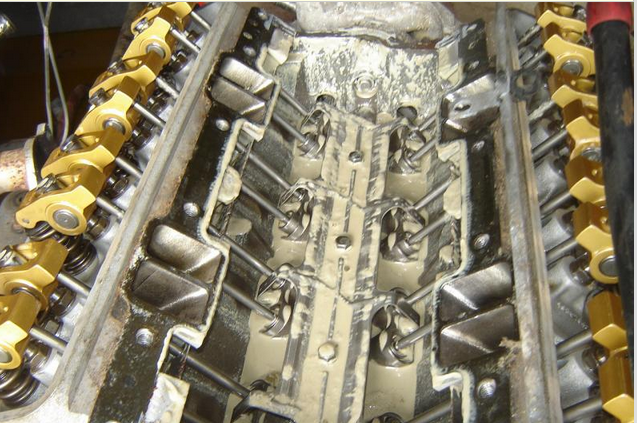


http://www.aa1car.com/library/coolant_leaks.htm
http://www.ifitjams.com/radiator.htm

http://www.lbfun.com/warehouse/tech_inf ... 0Paper.pdf
theres several versions, of these kits to fit and function on different types of radiators

http://www.harborfreight.com/radiator-p ... 1b2166c62d

http://www.amazon.com/dp/B00061SGHW/ref ... B00061SGHW
http://www.sears.com/shc/s/p_10153_1260 ... 921x00003c
http://store.summitracing.com/partdetai ... toview=sku
Summit SUM-900078 $34.95

basically its a radiator cap test assembly that lets you pressurize the coolant system without needing to run or heat the system, making it far easier to locate leaks, 20 psi will usually be all that's needed to get coolant to seep or spray from any leaks, if your engines dripping coolant from the front chances are good its a worn water pump, or leaking freeze plugs, if the cars more than 4-5 years old.
viewtopic.php?f=62&t=846&p=1621&hilit=freeze#p1621
viewtopic.php?f=57&t=755
http://www.corvettefever.com/techarticl ... index.html
http://wiki.answers.com/Q/What_are_the_ ... ead_gasket
C4 related info
http://shbox.com/1/4th_gen_tech2.html#radflush
viewtopic.php?f=57&t=832
heres a different tool you'll need on occasion
"A combustion test kit can be found at your local NAPA, auto parts store. The part number is 700-1006. The price for this part is less than $50.00. Exhaust gases in your cooling system can suggest a head gasket leak, a cracked block, or a warped head, etc. A leaking head gasket can create excessive heat and pressures exceeding the ability of the radiator’s cooling capacity, and should be repaired immediately to avoid additional costly repairs
http://www.arrowheadradiator.com/head_g ... k_test.htm
To do the test, add the blue detector fluid to the (block-tester) plastic container according to the directions, and place it onto the radiator filler neck. The squeeze bulb is placed on top of the reservoir and squeezed repeatedly (Some block testers, have a tube that connects to a vacuum line instead of a squeeze bulb). Squeezing the bulb will draw air from the radiator through the test fluid. Block tester fluid is normally blue. Exhaust gases in the cooling system will change the color of the fluid to yellow, indicating a combustion leak. If the fluid remains blue, exhaust gases were not present during the test. The vehicle should be started and at operating temperature before performing the test. Vehicles with head gasket leaks may overheat, and purge hot water and steam out of the radiator. Perform this test, at your own risk, and do not do the test, unless you are experienced and are wearing clothing and equipment to protect you from burns, or injury. For an overheating specialist in your area that is familiar with this procedure go to http://www.narsa.com.
Sometimes, engines with a head gasket leak show steam, water or white smoke exiting the exhaust pipe. Other symptoms include coolant in the oil, or oil in the radiator coolant. "
http://www.arrowheadradiator.com/Radiat ... 20Tips.htm
http://www.ehow.com/how_2188877_check-c ... leaks.html
http://www.shopperschoice.com/item_name ... 74867.html
http://www.diynetwork.com/diy/en_mainte ... 87,00.html
http://www.shopperschoice.com/item_name ... ce=froogle
YOU'LL NEED A BLACK LIGHT to use the dye!
http://www.scoe10x.com/scripts/prodView ... FQodW3D9CQ
http://www.cheapnovelty.com/handheld-blacklight.html
keep in mind milky looking oil in the engine and a compression test showing a low cylinder(S), and smoke from the tail pipes usually indicates a bad head gasket or cracked head or block, oily milky crap in the coolant but clean oil and the engine running ok, tends to indicate a cracked radiator and that also frequently results in milky trans fluid which will quickly kill the transmission
coolant mixed with oil has almost no ability to lubricate or prevent rust, a leaking head gasket,a cracked head, or leaking intake gasket, etc. will allow the two fluids to mix, if the problems not quickly corrected, the engine run with the mix being pumped to the bearings is in for major damage too occur



